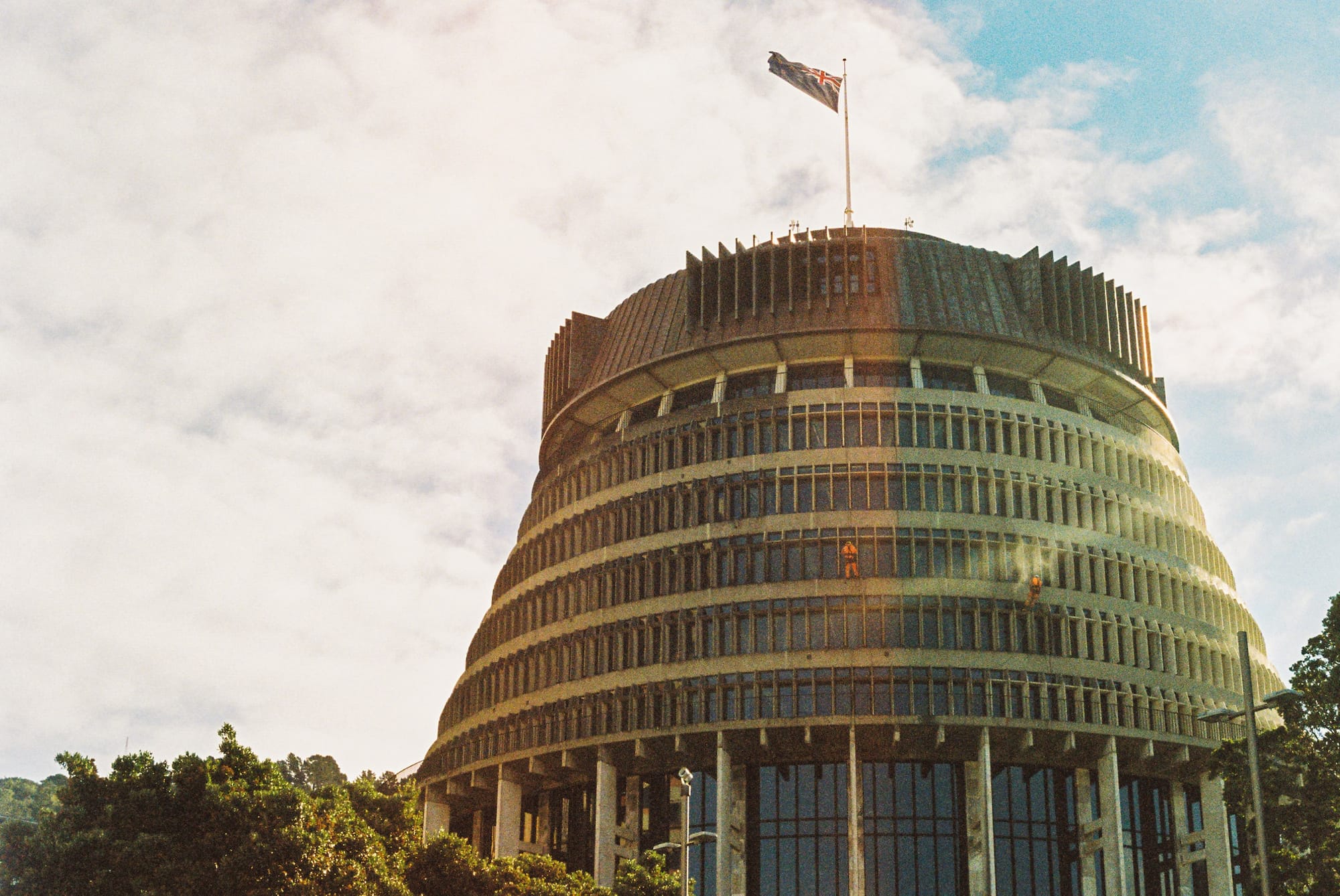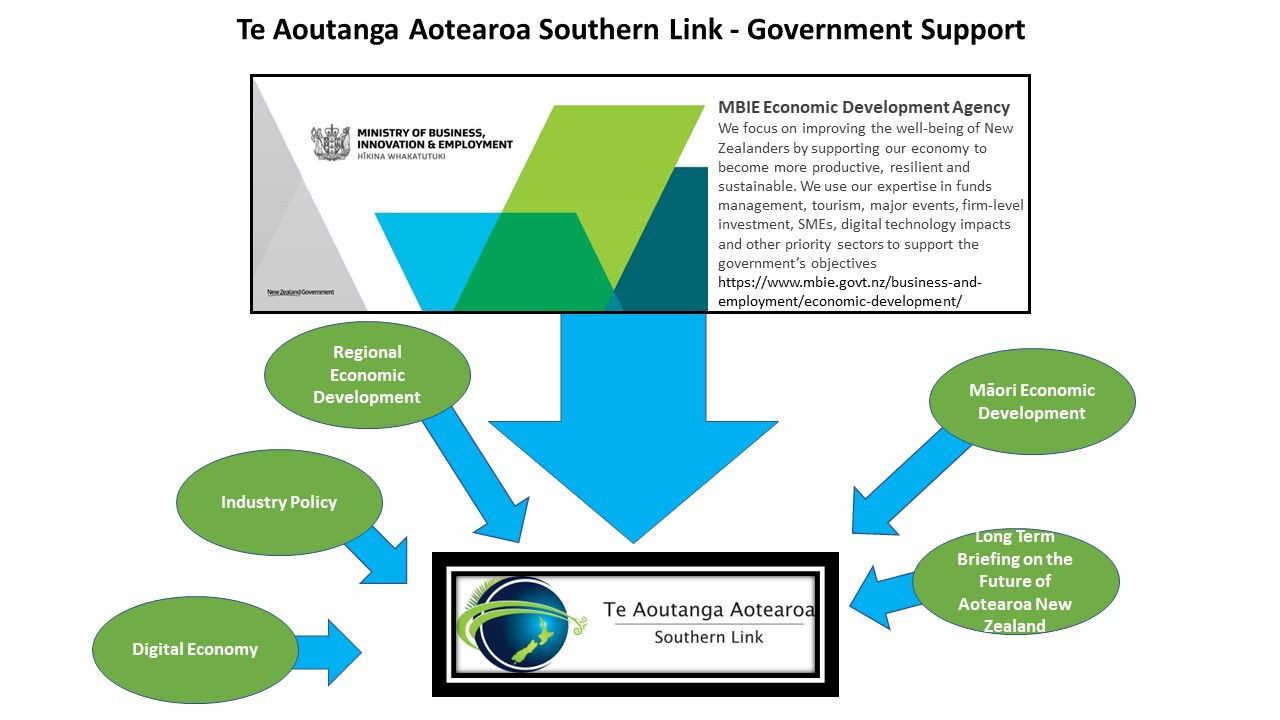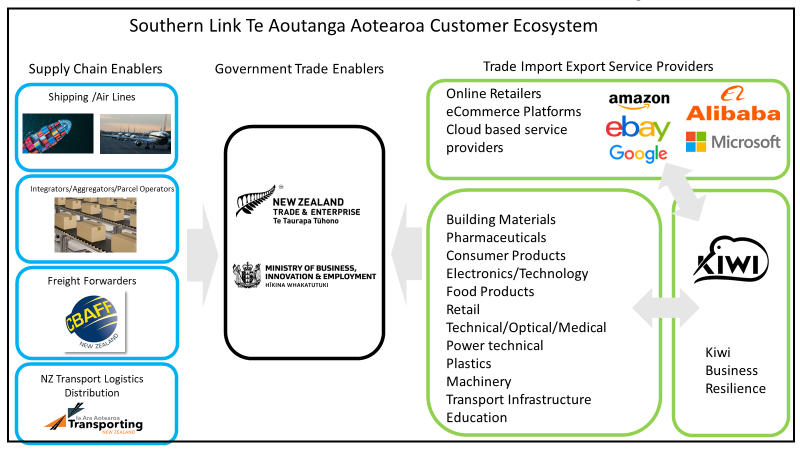GOVERNMENT POSITION

Government Position
The Te Aoutanga Aotearoa Southern Link will undertake a bottom-up approach with the Government.

Our Bottom-up Approach will ensure more informed commercial decision-making and a greater sense of ownership and responsibility at an NZ Inc level.
The Te Aoutanga Aotearoa Southern Link is designed to:
- Boost trade
- Employment
- Innovation.
- Economic value creation.
- National support (Private/Māori/local Government and Central Government).
- Supply chain Resilience.
- Sustainability.
- Agility through future Global and National changes that may affect Aotearoa New Zealand's economy.
We believe the Te Aoutanga Aotearoa Southern Link should be a flagship government initiative that will play a critical role in Aotearoa New Zealand’s post pandemic ‘Economic and Supply Chain Resilience.”
In order for this initiative to succeed, there will be the need for legislation changes within existing regulatory framework.

Customs (Regulatory)
Regulatory Minor Changes to Customs (Legislation) supported by IRD/MPI:
- Asia, China.
- South America.
- Australia.
- USA, North America.
- Europe.
- Pacific Islands - Samoa/Tonga/Cook Islands/Nui/Nauru/Fiji.
Management of origin merchandise/raw materials without having to pay taxes or duties until they are transferred to a domestic market.
The merchandise can re-export to either Asia/China Australia and South America under customs regulations, and not subject to customs duty.
Proposed Regulation amendment for Legislative identification:
- Temporary Storage – Bulk in a CCA,
- Deferred Payment – Extension of the maximum period after which import duties and GST are payable for goods stored in a CCA for at least 36 months.
- Transshipments within NZ – Auckland, Tauranga, New Plymouth, Whangarei, Lyttleton.
- Re Export no Duties and Taxes (product does not enter NZ domestic).

IRD ( Regulatory)
Will play a critical role in the formation of the Te Aotanga Aotearoa Southern Link.
Approval in terms of tax deferral versus the economic value that the initiative will generate.
- The Sothern Link Te Aoutanga Aotearoa (TAA) aims to create economic activity - like trade, investment, and jobs – connected with ports (including coastal shipping) / airports /rail and road.
- Goods imported into a TAA trade hub are exempt from taxes, that are normally paid to the NZ government.
- It means business in TAAs can import materials tariff-free, only paying tariffs on finished products leaving the site for elsewhere in NZ.
NZ Treasury insight WEU Special Topic - The economic impacts of global supply chain disruption
“An ongoing risk for New Zealand will be the loss of international connections if global supply chain disruption persists. Given the country's relatively small market and geographic isolation, some trading partners may shift away from New Zealand to focus on closer markets where trade is more convenient. Some export sectors have already experienced challenges accessing previously reliable overseas markets, and fear that these connections could be damaged permanently. The longer disruption persists, the greater the risk that international trade becomes less globalised and New Zealand loses important connections, with significant implications for the domestic economy”.
International Examples (Treasury)
USA
The USA Treasury’s intent of their special economic zones is to encourage international trade and increase U.S. exports According to the USA FTZ Board’s 2018 annual report, there were 195 active zones (out of the approved 260) and each state (plus Puerto Rico) has at least one zone. Over 440,000 people were employed at roughly 3,300 firms that used FTZs during the year. The total value of merchandise received in FTZs was $794 billion.
Canada has implemented a Treasury key initiative in terms of management and control of Canadas existing and proposed “special economic zones”. That that give some guidance and a road map on the implementation of the Southern Link Aoutanga Aotearoa within Aotearoa New Zealand, that is worthy of review.
'What are the considerations for requests to establish an FTZ Point? Considerations for requests to establish an FTZ Point at a new location include:
- An economic priority for the region (as identified by local/provincial governments).
- Private sector leadership and commitment.
- Dedicated governance body (through legislation/incorporation).
- Favorable business environment and available land.
- High quality infrastructure.
- Active participation in and connection to global supply chains.
- Access to a skilled labor force.
- Access to a multimodal transportation system.
https://www.worldfzo.org/Portals/0/OpenContent/Files/487/Canada_FreeZones_Atlas.pdf
UK and their Treasury remarks:
“At Wilton International, Koss acknowledges that the freeport model might come with risks. However, it nonetheless stands as an opportunity in an area where the promise of a new beginning will be leapt upon. “It’s great to have a focal point around which everybody can coalesce, and everybody understands what you’re trying to do. The starting gun has been fired. It’s great to see the Treasury have approved that, and we’ve now got to get out there.” Neil O’Brien, the minister for levelling up, said: “Freeports will help to generate prosperity and spread opportunity by driving trade and innovation as we level up across the United Kingdom.
Te Manatu Waka Alignment with Southern Link Te Aoutanga Aotearoa
The Southern Link Te Aoutanga Aotearoa Southern Link is aligned with all aspects of Te Manatu Waka long term and holistic strategies including support of SME’s, decarbonisation, ensure Māori interests at the forefront, mitigation of supply chain disruptions offshore, near shore and onshore.
"Trucks, trains, ships, and planes move about 280 million tonnes of freight a year around New Zealand. Almost everything we have or need to live our lives and operate our society and economy, is brought to us via this system. It is a complex and dynamic web of links and nodes involving multiple modes of transport, infrastructure networks, logistics nodes such as warehouses and cold stores, and agents including producers, freight forwarders, distributors, container yard operators, transport operators, and many more. Supply chains involve far more than transport. Of the five key supply chain management aspects – the plan or strategy, the sourcing of raw materials or required services, manufacturing, delivery and logistics, and the return of defective or unwanted products – the delivery and logistics task is the key focus of this issues paper."
https://www.transport.govt.nz/assets/Uploads/Freight-and-supply-chain-issues-paper-full-version.pdf
Te Aoutanga Aotearoa Southern Link geography and 'Government" collaboration
The Te Aoutanga Aotearoa (TAA) Southern Link will have economic flexibility within a defined geographic boundary.
A hypothetical TAA would be demarcated in agreement with customs and MPI. The services of which a TAA customer may undertake are predetermined through customs legislation.
The government would be focused on land assembly, site remediation and transport infrastructure to connect TAA’s with ports (Air/Sea) road/rail.
Each TAA will have unique geographical and national needs individually facilitated and invested by government The government would encourage collaboration between the TAA’s, firms, domestic and global transport providers, and higher education.
A clear understanding and awareness of local innovation ecosystem and its priorities. A coherent plan for engaging with local leadership to help accelerate economic growth through R&D.
Each TAA will be commitment to engage constructively with local innovation ecosystem, driving national, regional, and local impacts from R&D for Kiwi’s and kiwi businesses.
Each TAA will be focused on building strong partnerships with appropriate local, global and national bodies (Public or Private) in order to ensure plans are aligned for the benefit of local kiwi’s priorities and help to support local, national or global economic growth plans TAA’s are designed to be hotbeds of innovation,
TAA’s will contribute to the local and national innovation ecosystem’s through facilitating transnational research (aligned with higher education), skills development and data -sharing in the TAA region.
The TAA initiative will maintain a NZ’s high standards with respect to security, safety, workers’ rights, data protection (Blockchain), biosecurity, transport and the environment.
What is the next step?
We are now orchestrating (in agreement with the Government):
A privately funded proposal, Incorporating:
- Māori.
- Private Enterprise.
That will identifying the economic value for a “Special Economic Zone” capability that can be successfully implemented within Aotearoa New Zealand.
- Ability to show broad support (including willingness to invest) from a range of private businesses will likely be required to ensure this proposal is on the best grounds to succeed.
- A high level of support and evidence will be required to justify the significant policy and law changes that we are proposing.
- New Zealand Institute Economic Research will review and qualify the economic value of this initiative.

This will be presented to Government Regulators and to Ministerial level for evaluation and critique by the end of August 2023




Malado Kaba, the first female economy and finance minister of the Republic of Guinea and founder of Falémé Conseil, an advisory consultancy based in Guinea wrote:
"The Covid-19 pandemic has caused a decisive shift towards public-private collaboration. Businesses cannot thrive without an already thriving society, and so are beginning to recognise that in times of crisis, private and public interests are not just related but intertwined.
Business meanwhile can do much to make a positive social impact.
The best way to do so these days is to work with governments and apply their strengths in delivering goods and services.
The private sector therefore has to emulate what I suggest here are the three core strengths of government: the ability to convene partners, take a long view, and focus on delivering wide-ranging social impact."
Final Note
We are seeing the witnessing of a congruous relationship with our government and the Te Aoutanga Aotearoa Southern Link initiative.
Mobilising appropriate skills and resources on both sides has been mutually successful to jointly tackle the challenges of implementing an initiative such as a Special Economic Zone within Aotearoa New Zealand.
This is both gratifying and encouraging and sits the initiative in a sturdy and compelling position to forward its economic value with clarity in due course.


